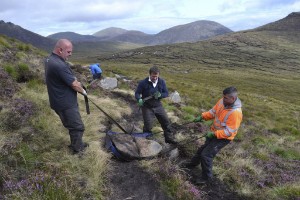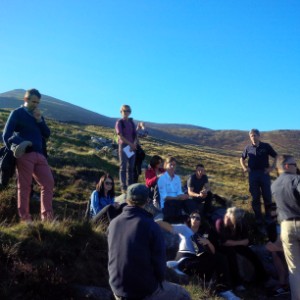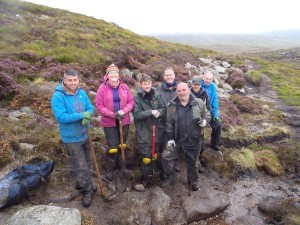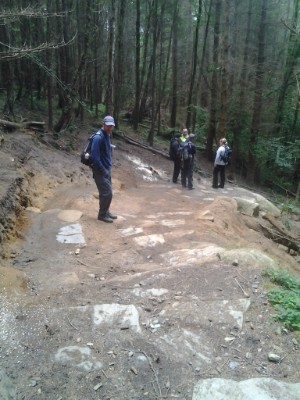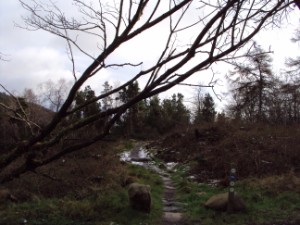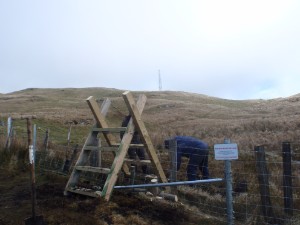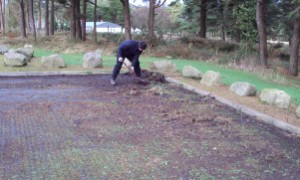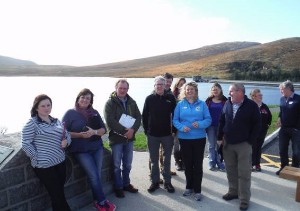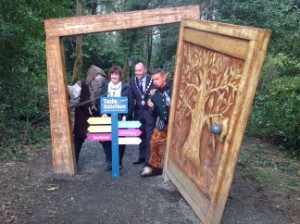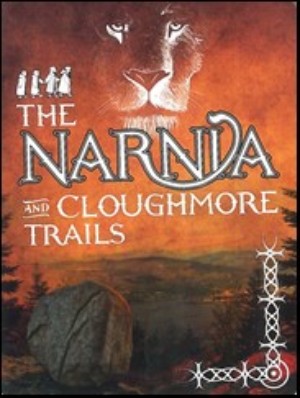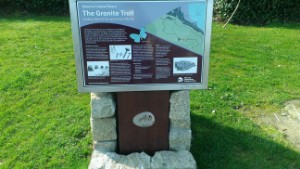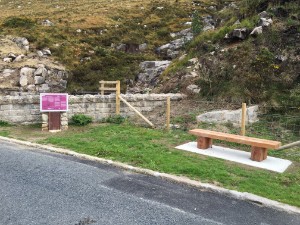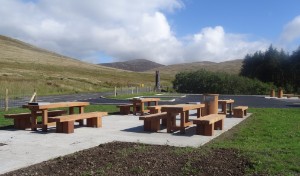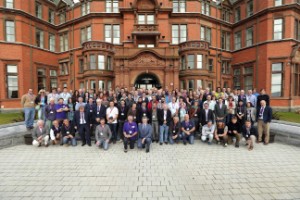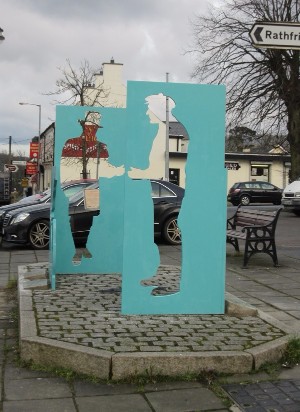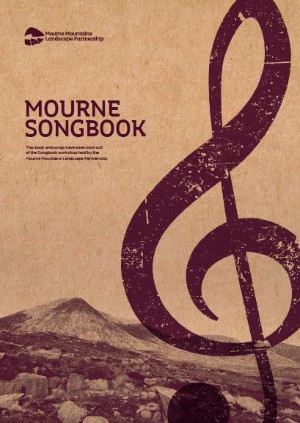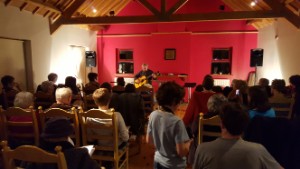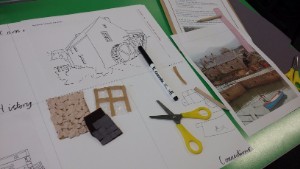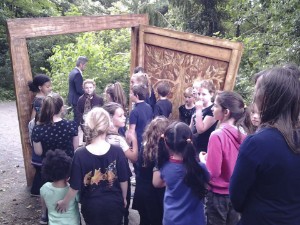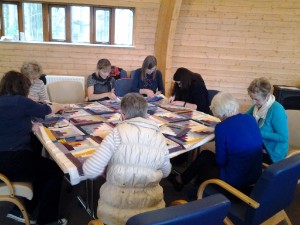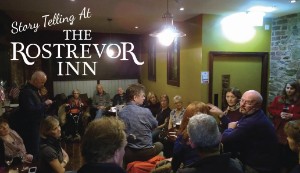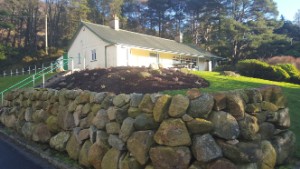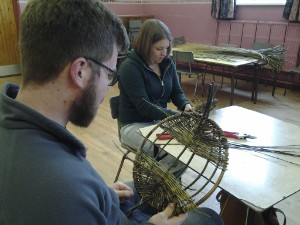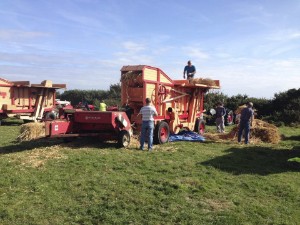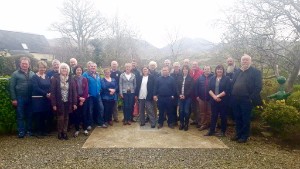Natural Environment Enhancement and Protection
Our work to protect and enhance the natural environment continued to be informed by the Mourne Biodiversity Action Plan and was targeted on priority habitats and species.
Wildfire Control
A period of detailed research, planning and negotiation had culminated at the end of the last financial year with a series of trial controlled burns on a site between the Silent Valley and Ben Crom reservoirs. This year saw the wider roll out of the techniques developed in conjunction with NI Fire and Rescue Service (NIFRS) and closely guided by Northern Ireland Environment Agency. Controlled burns and other vegetation management techniques were focussed on identified ‘critical control points’ in the Bloody Bridge area in early spring 2016, timing that optimised the potential for regrowth of priority species in addition to achieving the wildfire control outcome of removing ‘fuel load’ at strategic points in the landscape. Follow up burns also took place to expand the scale of treated area at Ben Crom.
Post burn management and monitoring of the site treated in 2014/15 was also undertaken and learning reported to key stakeholders through the Mourne Wildfire Group. This wider strategic learning and development of best practice for Northern Ireland is a key objective of the Mourne pilot project. Integral to this were site based workshops with experts from the Pau Costa Foundation from Catalonia, Spain which resulted in agreement with stakeholders of recommendations for additional data capture and topographical monitoring to most effectively target controlled burns. These workshops, and the practical experience of the controlled burns, are adding to the knowledge bank of how fire behaves in an open landscape like the Mournes and assisting Fire and Rescue Service in deploying its resources in the incidents of uncontrolled fire that continue to occur.
Like some of our volunteering work – outlined below – our wildfire control work featured on a new BBC Northern Ireland rural affairs programme entitled ‘Home Ground’
http://www.bbc.co.uk/mediacentre/latestnews/2016/home-ground
Healthy Heathland
Our Countryside team continued to work closely with the Mourne Mountains Landscape Partnership to develop a comprehensive approach to protecting and enhancing our precious upland heath. This aims to go beyond addressing key threats, like wildfire and erosion, to actively restore habitat and contribute positively towards achieving favourable condition targets for key designated sites.
Building on consultations with heathland experts undertaken in previous years, we finalised the selection of nine sites for the development of management prescriptions and methodologies, contracting Penny Anderson Consulting to develop detailed management plans. Based on this work four sites were subsequently prioritised for action in phase I. A number of demonstration and consultation events – based on site assessment methodologies and discussion of restoration techniques and implications - were held for key stakeholder groups including the Bloody Bridge area farmers and outdoor recreation groups.
Meanwhile, works continued at two locations - Silent Valley boardwalk and Ben Crom - and included sward turning to regenerate heather from earth (as opposed to root stock), control of Molinia grasses and the monitoring and treatment of wet flushes. A final practical task completed by year end was the sourcing and deployment of appropriate materials, including coir rolls and geojute at Slieve Binnian, Lamagan and Binnian Lough sites and the completion of detailed specifications and tender documents for contractors. We look forward to this work continuing apace in the coming year.
Monitoring, solving and involving
At Mourne Heritage Trust we are continuously monitoring for environmental issues – through our ranger service, volunteers, social media and other mechanisms – and finding solutions. The list below is not exhaustive but is designed to illustrate the breadth of work this year, both geographically and in terms of the variety of the interventions used.
- gorse management in conjunction with landowners at locations including Bloody Bridge and Trassey
- weekly litter patrol at 21 upland sites throughout the AONB and additional lifts to deal with dumping and litter hotspots
- coastal litter lifts at locations including Mill Bay and Kilkeel
- initiative to address accumulation of litter at Mourne Wall summit towers on Commedagh, Donard, Meelmore including signage, additional clean ups and press campaign with NI Water.
- stone wall repair
- pilot work to enhance the biodiversity value of the lowland path network including local green lanes through revised cutting and maintenance regimes
- invasive species removal across 4 square kilometres
- invasive species removal training
- native woodland – primarily oak and hazel – planting at Tullyree Upper, Tullyree Lower and Aughrim Hill and further planting opportunity at Slieve Croob scoped for the 2016/17
- grey squirrel control and red squirrel population enhancement in Mourne Park and Silent Valley
- care of bee colony established in our apiary at Dunnywater
Our Mourne Juniper recovery programme also continued to exhibit success. After completing a detailed survey and satisfying the various statutory processes, including addressing bio-security issues, 100 new specimens were planted out in three quarry sites around Drinneevar and Thomas’ Mountain – chosen to enhance connectivity and thus the opportunity for the plants to prosper. Monitoring and aftercare of previously planted sites was ongoing and nursery propagation continued to be successful.
Many of the activities above benefit from the input of our dedicated volunteers. Too numerous to list comprehensively we will instead, as representation for all those who contribute, acknowledge the input of the winners of our Mourne Natural Heritage Awards.
Gareth Allen was the recipient of the individual award for his commitment to volunteering on a weekly basis for over 6 years. Gareth regularly attends the Trust’s two organic gardens and tree nurseries, and helps out with litter lifting and other important environmental work across the AONB. He is also the Trust’s resident chicken expert and maintains a careful eye to ensure its free range chickens remain healthy and produce plenty of eggs! Martin Carey, Chief Executive of Mourne Heritage Trust presented Gareth with his award said ‘Gareth is one of our volunteer stalwarts and fully deserves this recognition for his dedication, come rain or shine’.
The group award recognised the contribution of a partnership of Mediation Northern Ireland and an asylum seeker group it supports called AMAL, which primarily involves people from Sudan but also has participants from Algeria, Eritrea, Ethiopia, Iraq and Syria. AMAL members have been volunteering in the Mournes for over 2 years undertaking erosion control work along popular walking trails, repairing dry stone walls, carrying out heathland restoration work and litter lifting from the beaches along the Mourne coastline. While the hardier types tackle the High Mourne activities, the beach clean-ups prove very popular with AMAL’s family groups and part of the success of the partnership has been the involvement of all ages and abilities. The group has greatly enriched our work, sharing cultural experiences and traditions with us as well caring for nature. In addition to featuring on BBC NI’s ‘Home Ground’ television programme, AMAL members were the focus of radio and web coverage. Please see and hear http://www.bbc.co.uk/news/uk-northern-ireland-34389279 and https://audioboom.com/boos/3755963-a-new-kind-of-peace-wall
Along with volunteer rangers, special needs groups, corporate groups, youth rangers and individuals from a variety of backgrounds, the award winners contribute to and benefit from social inclusion and health outcomes as well as conservation. All of our funders contribute to supporting the volunteer pork but in particular the Active Lifestyles project, funded by BIG Lottery, drives participation. In the year past this funding enabled us to commission expert consultancy to help scope the potential for growing and financially sustaining our volunteering and we look forward to working on the recommendations of this exercise in the year to come.
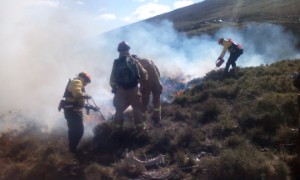
Controlled burn at Bloody Bridge
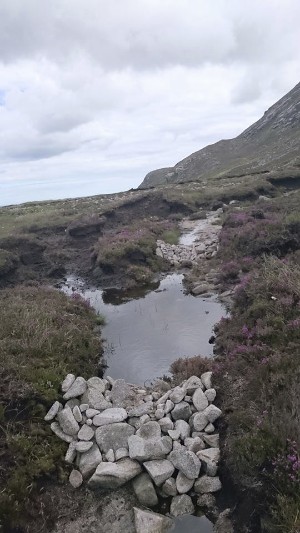
Hand built stone dams reducing erosion through retaining sediment
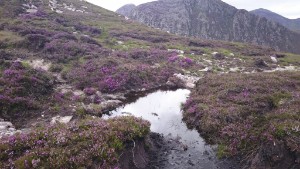
Dams beneath heather to encourage species like cotton grasses and bog asphodel
.jpg)
Peregrine falcon hovering over the Mournes (photo courtesy of Ernie Wilson)
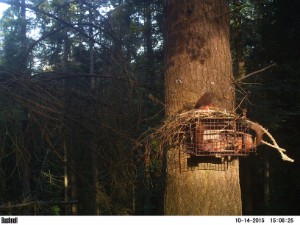
Thriving red squirrels
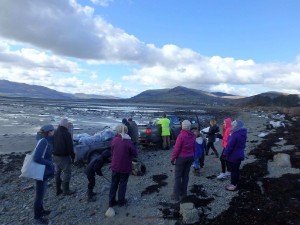
MIll Bay litter lift
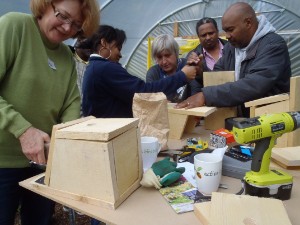
Volunteers making bird boxes
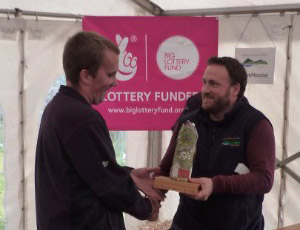
Gareth Allen receiving natural heritage individual award
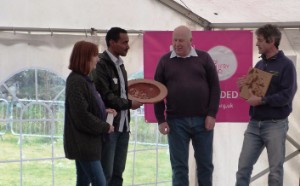
Representatives of AMAL and Mediaition NI receiving natural heritage group award
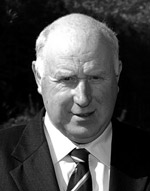 Welcome to the Annual Report of Mourne Heritage Trust for 2015/16 - an exceptionally challenging, but ultimately rewarding, year for all involved.
Welcome to the Annual Report of Mourne Heritage Trust for 2015/16 - an exceptionally challenging, but ultimately rewarding, year for all involved.![]()

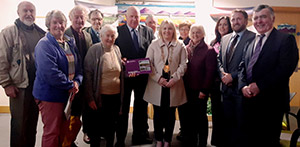
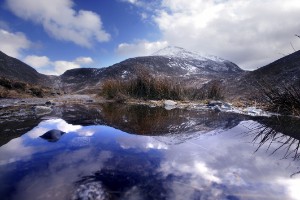
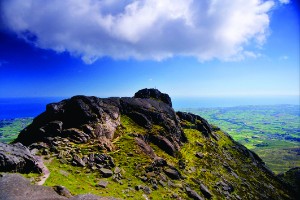

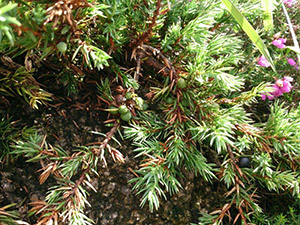

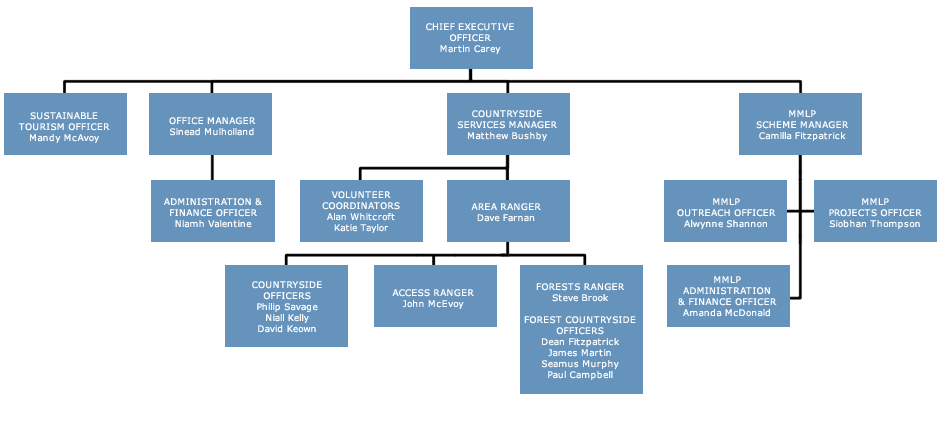
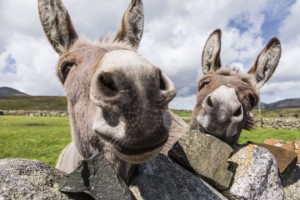
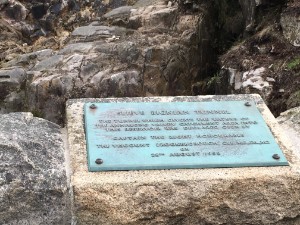
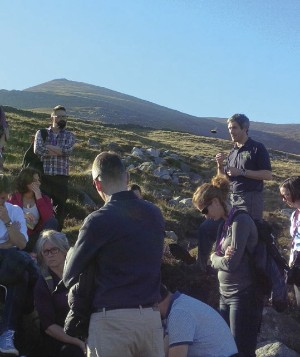

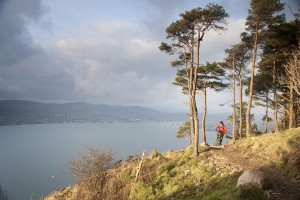
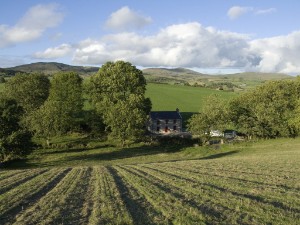



.jpg)





